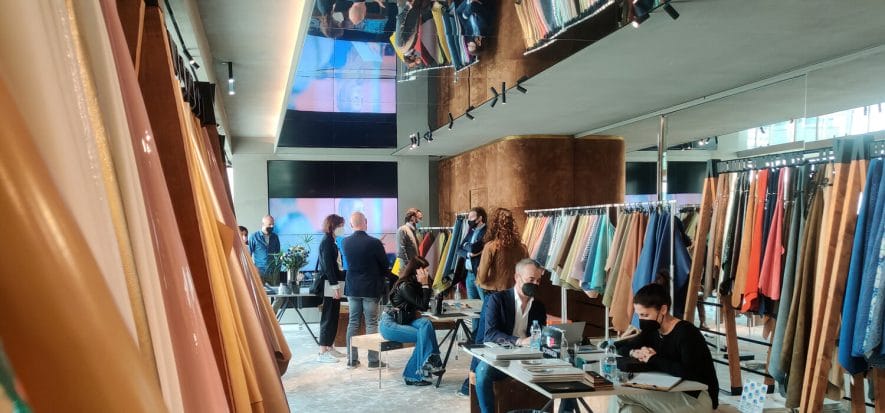The opportunity to meet them was their joint presence (on April 27-28) in Milan, at Spazio Lineapelle in via Gorani. An opportunity given by the presentation (by invitation, in the utmost respect of the anti-Covid legislation) of their collections. An interesting and stimulating moment of sharing and, also, of understanding (as far as possible, from the current, always critical) economic phase. Here then is how BCN Concerie, Sciarada, Sicerp and Schmid tell us about the market and its current problems.
Sicerp, the market and the difficulty of understanding it
“I really struggle to understand the situation we are experiencing – admits Stefano Parotti, Chief Operating Officer of Sicerp tannery in Lombardy-. This event allowed us to meet, finally in presence, with some selected customers”. Good feedback for a situation that manifests an, at times suffocating, complexity: “Brands were certainly the first to demonstrate the will to restart. There are groups that have fully succeeded and others, along with various independent brands, who still, inevitably, struggle”. Thus, “apart from a few white flies, they cannot make plans, which does not allow us to understand when everything will start again. And when it will be necessary to accelerate to deliver in the right time”.
Consequence: “The big problem is timing. Like Sicerp, we can say that we work on interesting levels, but with expectations that I cannot quantify precisely, because it is impossible to understand and manage the correct production and delivery times. Which also makes procurement complicated”. Without forgetting, “that raw materials’ prices are increasing”.
Sciarada, hybrid situation
“The market situation is hybrid – comments Marco Gabbrielli, commercial manager of the Tuscan tannery Sciarada -. There is a growing need to be flexible and fast, focusing on the availability of materials and service”. Which “at Sciarada, we have been developing for some time now. For example, with the prompt delivery of the 80 colours of our basic suede. All of this is becoming more and more important, because Covid has pushed us away in physical terms, but brought us closer to customers precisely in this need. That of offering them an ever faster and more efficient service.
Then, inevitably, the problem remains that, today, they need leathers, but they don’t know when and how. The distance does not allow us to have the information flows that we had before Covid. And this complicates the timing from various points of view. And let’s not forget that customers find themselves dealing with markets that have opened, others that are closed: that there is fog, at this moment, is logical. We hope it clears up in the next six months”.
BCN, working on the safe side
Massimo Soldaini, sales manager at BCN Concerie, explains that “product developments have not stopped. Even from a distance, the research work with customers has been there, although, of course, when you are able to meet in person with customers and show them leathers, everything becomes easier. We have been working with email and WhatsApp for months, and it is not always the best for our type of work. But we had to make it work. From all the brands, we perceive the desire for contact, to find a concrete piece of work”. How much does this affect the management of production times?
“At the level of samples and development, we have not encountered very big problems. If anything, today brands move in a different way. If before they had very clear ideas, and even took risks in making pre-orders, today they work almost exclusively on the safe side. This requires the programming of a tannery to be completely different. We must try to anticipate, taking risks and managing a production that becomes more fragmented: orders arrive, then re-stockings which, when requested, have very short deadlines”.
Schmid, the absence of the middle segment
Alongside Sicerp, Sciarada and BCN, there was also Schmid, a Milanese company specialising in fabrics and materials for the footwear (80%) and leather goods sector. Silvio La Cava, its Chief Operating Officer, explains to us that “compared to leather, our fabrics represent a niche that enjoys the advantage of sneakers and a working trend that, with luxury brands, has not stopped. The real problem is the current absence of the middle segment”. Do commodity prices also worry the target market of your type of production? “Yes. We suffer the same tension as tanneries on different raw materials. And in this phase we absorb them, having already come out with our price lists”.










